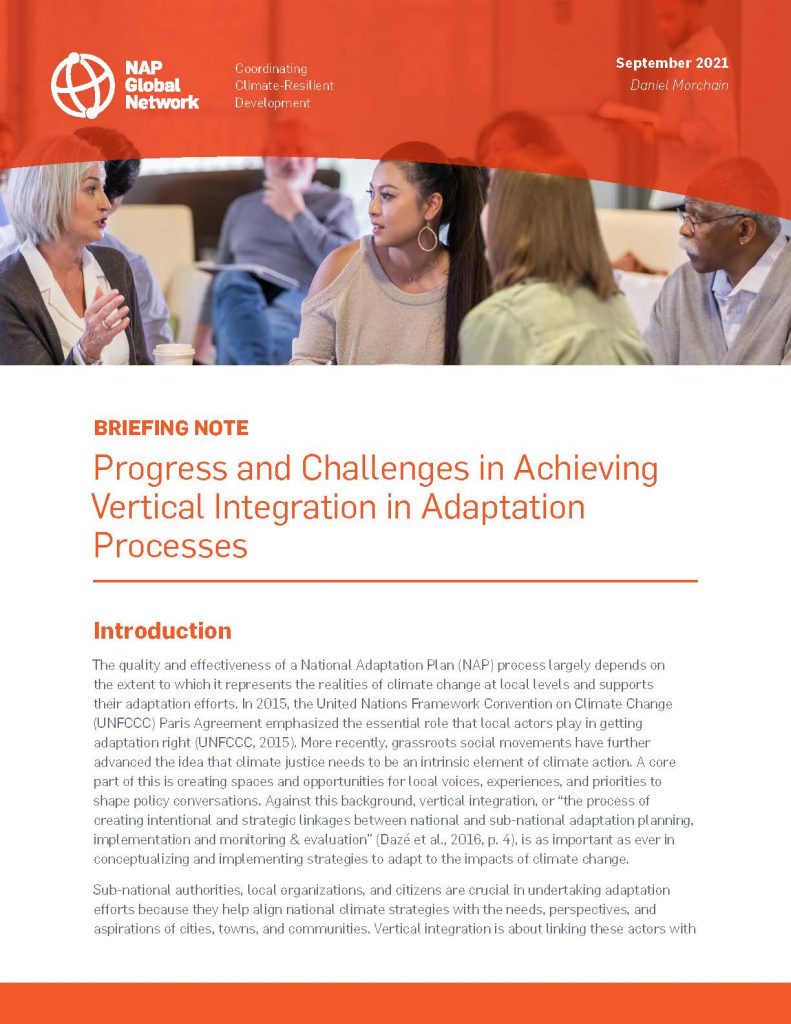
Progress and Challenges in Achieving Vertical Integration in Adaptation Processes
The quality and effectiveness of a National Adaptation Plan (NAP) process largely depends on the extent to which it represents the realities of climate change at local levels and supports their adaptation efforts.
Sub-national authorities, local organizations, and citizens are crucial in undertaking adaptation efforts because they help align national climate strategies with the needs, perspectives, and aspirations of cities, towns, and communities. Vertical integration is about linking these actors with decision-makers who are guiding national-level adaptation efforts, thereby creating opportunities for participation in the NAP process by diverse stakeholders. In this way, vertical integration helps ensure inclusivity and representation in adaptation processes.
The objective of this briefing note is to reflect on the experiences of several countries with vertical integration. We reflect on what is working well, what is proving particularly difficult, and how to move forward.
Related content:
- Vertical Integration in National Adaptation Plan (NAP) Processes: A guidance note for linking national and sub-national adaptation
- Webinar | Linking National and Sub-national Adaptation: Vertical integration in National Adaptation Plan (NAP) processes
- sNAPshot | Getting Started on Vertical Integration: Linking national and sub-national adaptation planning processes
- Resilience in Action: Five years of supporting National Adaptation Plan (NAP) processes
Publisher: International Institute for Sustainable Development (IISD)